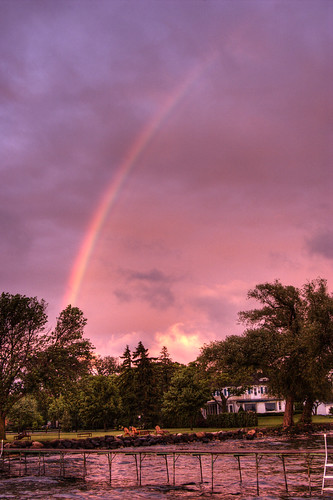Rainbows can be observed whenever there are water drops in the air and sunlight shining from behind the observer at a low altitude or angle. Although more rare, a moonbow, or lunar rainbow, can be seen on strongly moonlit nights. However since human visual perception for color is poor in low light, moonbows are most often perceived to be white.
The rainbow's appearance is caused by dispersion of sunlight as it goes through raindrops. The light is first refracted as it enters the surface of the raindrop, reflected off the back of the drop, and again refracted as it leaves the drop. The overall effect is that the incoming light is reflected back over a wide range of angles, with the most intense light at an angle of 40°–42°. The angle is independent of the size of the drop, but does depend on its refractive index, or how much a material bend's light which passes through it's boundary. Seawater has a higher refractive index than rain water due to salt minerals, so the radius of a 'rainbow' in sea spray is smaller than a true rainbow. This is visible to the naked eye by a misalignment of these bows.
A rainbow does not actually exist at a particular location in the sky. It is, instead, an optical phenomenon whose apparent position depends on the observer's location and the position of the sun. A rainbow does not actually exist at a particular location in the sky. It is, instead, an optical phenomenon whose apparent position depends on the observer's location and the position of the sun.
Thursday, May 31, 2007
Optical Phenomena
Subscribe to:
Post Comments (Atom)


1 comment:
Your blog keeps getting better and better! Your older articles are not as good as newer ones you have a lot more creativity and originality now keep it up!
Post a Comment